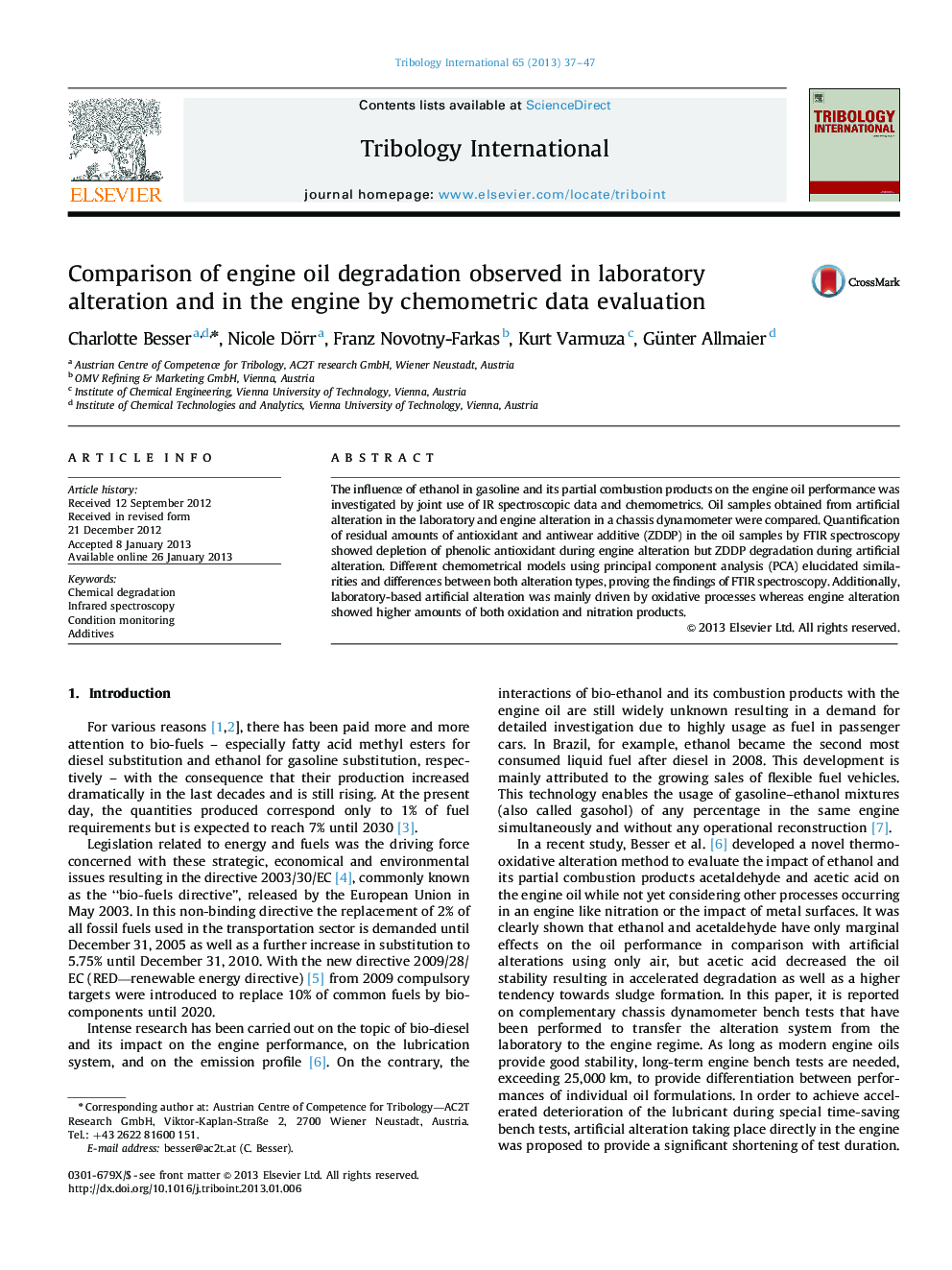| کد مقاله | کد نشریه | سال انتشار | مقاله انگلیسی | نسخه تمام متن |
|---|---|---|---|---|
| 614977 | 1454839 | 2013 | 11 صفحه PDF | دانلود رایگان |

The influence of ethanol in gasoline and its partial combustion products on the engine oil performance was investigated by joint use of IR spectroscopic data and chemometrics. Oil samples obtained from artificial alteration in the laboratory and engine alteration in a chassis dynamometer were compared. Quantification of residual amounts of antioxidant and antiwear additive (ZDDP) in the oil samples by FTIR spectroscopy showed depletion of phenolic antioxidant during engine alteration but ZDDP degradation during artificial alteration. Different chemometrical models using principal component analysis (PCA) elucidated similarities and differences between both alteration types, proving the findings of FTIR spectroscopy. Additionally, laboratory-based artificial alteration was mainly driven by oxidative processes whereas engine alteration showed higher amounts of both oxidation and nitration products.
► Elucidation of oil degradation during alteration in the lab and in the engine.
► Chemometric plotting of similarities and differences among divers alteration types.
► Added value by joint use of IR spectroscopic data and principal component analysis.
► Valuable input for developing novel lab-based artificial alteration methods.
Journal: Tribology International - Volume 65, September 2013, Pages 37–47